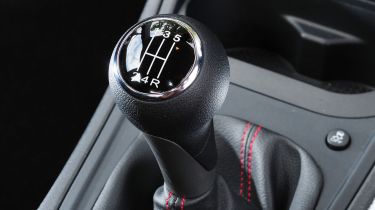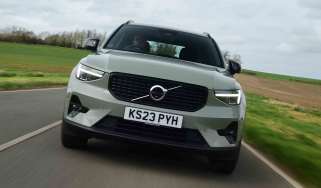How to drive a manual car
Driving a manual car well can improve smoothness and efficiency – find out how with our useful guide

Driving a manual car might be second nature or a completely new and daunting prospect. Whether you’re a novice with a ‘stick shift’ or seasoned clutch operator, there will always be something you can learn or practice to develop your skills. Here we look at the skills and techniques of driving a manual car and the reasons why it pays to perfect them.
What is a manual gearbox?
When a car is described as having a manual gearbox or manual transmission, it means the driver has to use a gear lever and clutch pedal in order to select and change gears. The alternative to a manual transmission is an automatic transmission, where the driver accelerates, brakes and steers, but the car selects and changes gears on its own. These days many automatic cars do allow the driver to select which gear to drive in, typically by using a gear shift lever or paddles behind the steering wheel, but the gearbox still changes automatically without the need of any further driver input.
Automated manual gearboxes are an in-between solution, where the driver still has to shift to the correct gear while driving, but the clutch operates automatically so there’s no clutch pedal. For the purposes of the driving test and licences, automated manual gearboxes are considered to be fully automatic. So if you want to learn to drive a manual car, it has to be one with a clutch pedal.
Apart from a clutch pedal, the other unique feature of a manual transmission is a gear-lever that the driver must move through a slotted ‘gate’ to select and subsequently engage the desired gears. The relative position of each gear is typically marked on the top of the gear lever, and the lever itself is spring-loaded so when the gearbox is in neutral (meaning no gear is engaged) the lever rests between third and fourth gear slots in the middle of its gate.
Why do cars have gearboxes?
To understand why a car needs gears, you have to understand one of the basic principles of the internal combustion engine. Namely, that its internal components must typically spin at anything between 1,000 and 7,000 revolutions per minute (RPM), in order to keep running. If it was possible to connect your engine directly to the driven wheels, these RPMs would see the wheels turning at 75mph or so - even when ‘idling’ at 1,000rpm without you touching the accelerator pedal.
When a gearbox is employed between the engine and road wheels this reduces the speed of rotation at the wheels to more manageable levels. Reducing the rotation speed of the wheels via gears also increases the torque or ‘pulling power’ of the engine.
The lowest gears reduce driven wheel speed the most, which is why you always select first gear to pull away at low speeds from standstill. The extra pulling power of the lower gears also allows you to drive up steep hills without stalling the engine.
‘Changing up’ through the gears in sequence increases the speed potential of the road wheels in increments, according to the speed of the engine controlled by the accelerator pedal.
A typical modern manual gearbox will have five or six forward gears, plus a reverse gear. It’s often the case that fourth gear ratio will be set at close to 1:1 so engine RPM matches that of the driven wheels – this is called direct drive. Fifth and sixth gear ratios will be higher than 1:1 which means the road wheels spin faster than the engine, making these higher gears the most economical for cruising on the motorway. These are called overdrive gears, although the term isn’t widely used these days.
Typically the optimum speed ranges for each gear in an ordinary hatchback with a five-speed gearbox could look something like this:
- 1st gear - 0-10mph
- 2nd gear – 10-20mph
- 3rd gear - 20-30mph
- 4th gear – 30-40mph
- 5th gear – 40+mph
In the real world, especially in cars with five- or six-speed manual gearboxes, drivers will often skip gears as they accelerate, perhaps changing from second gear directly to fourth or even fifth gear as conditions allow. You may sometimes hear this referred to as ‘block changing’ and while being in too high a gear for a given road speed reduces engine responsiveness, the technique can improve fuel efficiency.
How does the clutch work?
The clutch in a manual transmission is a device used to temporarily separate the engine’s rotating flywheel from the gearbox, allowing the engine to run and rev-up without the wheels of the car being turned. In its simplest form the clutch consists of two friction plates that are locked together when you need the engine to turn the wheels. When you want the engine to stop turning the wheels, depressing the clutch pedal uses hydraulics, electronics or a cable system to force the two friction plates apart – disengaging the mechanical link between the spinning engine and the gearbox.
Slowly releasing the clutch pedal brings the friction plates together again, and as they re-engage power is once more transmitted through the gearbox to the driven wheels. The point of re-engagement is known as the ‘biting point’, and getting a feel for it is the key to successfully driving a manual car.
You only need to use the clutch when driving, as when you’re parked with the gearbox in neutral the engine is effectively disconnected from the wheels even if it’s running.
Driving a manual car
This is the basic technique to driving a manual car:
Starting and pulling away
- Make sure the gearbox is in neutral, by checking the gear-lever moves freely left-to-right across its gate.
- Check the handbrake is applied.
- Check the individual gear positions marked on top of the gear-lever. (First gear is usually left and forward.)
- When you have confirmed the car is in neutral, use the ignition key or button to start the engine.
- With your left foot press the clutch pedal fully to the floor.
- Move the gear lever into first gear.
- With your right foot gently press the accelerator just enough to raise engine RPM a little above idle.
- Slowly release the clutch pedal until you feel a vibration and the car just trying to move against the handbrake – this is known as the clutch ‘biting point’.
- Release the handbrake and the car should begin to move forward.
- Continue to release the clutch pedal while gently increasing pressure on the accelerator.
- Remove your foot from the clutch pedal as you drive forward.
Changing gears on the move
- As vehicle’s speed increases, you’ll be ready to change up through the gears.
- Take your foot off the accelerator, while simultaneously depressing the clutch all the way to the floor with your left foot.
- Without snatching at the gear-lever, move it smoothly but promptly to the next gear while the car continues to roll forward under its own momentum.
- Smoothly release the clutch, and then re-apply pressure to the accelerator with your right foot to continue accelerating.
- Repeat the process through the gears.
- Remember to move your left foot completely off the clutch pedal between gear changes.
- To change down through the gears, take your right foot off the accelerator to slow down or brake with your right foot as appropriate.
- Depress the clutch simultaneously, and move the gear-lever to the required gear.
- Let the clutch up all the way to engage the gear, as your right foot continues to cover the brake or accelerator pedal.
Should you learn in a manual or automatic?
The theory of driving a manual car can sound complicated to those contemplating learning, but in reality it’s easy to get to grips with. If you can do two other things at once, for example pressing the accelerator with your foot while turning the steering wheel, you’ve probably got the level of motor skills required to operate a manual transmission.
Of the nearly three-quarters of a million driving tests taken every (normal) year in the UK, less than 5,000 take automatic only tests. Although it’s considered easier, a lower proportion of learners pass the automatic test than the full manual test. This is probably because learners attracted to the automatic test may be of a more nervous disposition, so not a reflection of the ease or otherwise of driving an automatic car.
Learner drivers considering whether to take a manual or auto test should consider that insurance for autos is often higher than for manual cars, because they’re often more expensive and pricier to fix.
The cheapest ‘starter cars’ for new drivers are usually manual too.
Advanced manual gearbox techniques
Once you’ve got the hang of driving a manual gearbox, you may want to explore some of the advanced techniques available to manual gearbox drivers:
Rev-matching
Changing down a gear will often require an increase in engine RPM, and normally this happens by default after the clutch re-engages drive following the downshift. If you are able to predict the required higher engine speed, it’s possible to dab the accelerator while the gear lever moves through the neutral part of its gate between two gears, so the engine will already be spinning faster when you release the clutch to engage the new lower gear. This reduces wear and tear on components and results in smoother changes if done correctly, but it does require you to have done all your braking before you attempt to change gear.
Heel-and-toeing
Braking before a gear change often makes the most sense during normal road driving, but performance drivers may want to brake simultaneously while down-shifting, as a means to making the fastest progress through a corner, for example.
Heel-and-toeing is a method of operating the brake pedal and the accelerator pedal simultaneously with your right foot, while your left foot remains free to operate the clutch. This means a skilled driver can still rev-match while braking. The technique involves twisting your foot so your toes cover the brake pedal and your heel covers the accelerator (hence ‘heel and toe’), or using both sides of your right foot to operate the brake and accelerator.
Double de-clutching
In the old days cars had far clunkier gearboxes, and drivers would double de-clutch to try and make their gear changes smoother. It simply means using the clutch twice for every shift, so you press the clutch pedal to move the gear lever into neutral, then release the pedal and press it again before engaging the next gear.
It’s no longer really essential thanks to smooth-changing synchromesh gearboxes on modern cars, but some drivers still swear it reduces wear and tear on components.
Now find out about the benefits of driving a car that's fitted with a limited slip differential...






